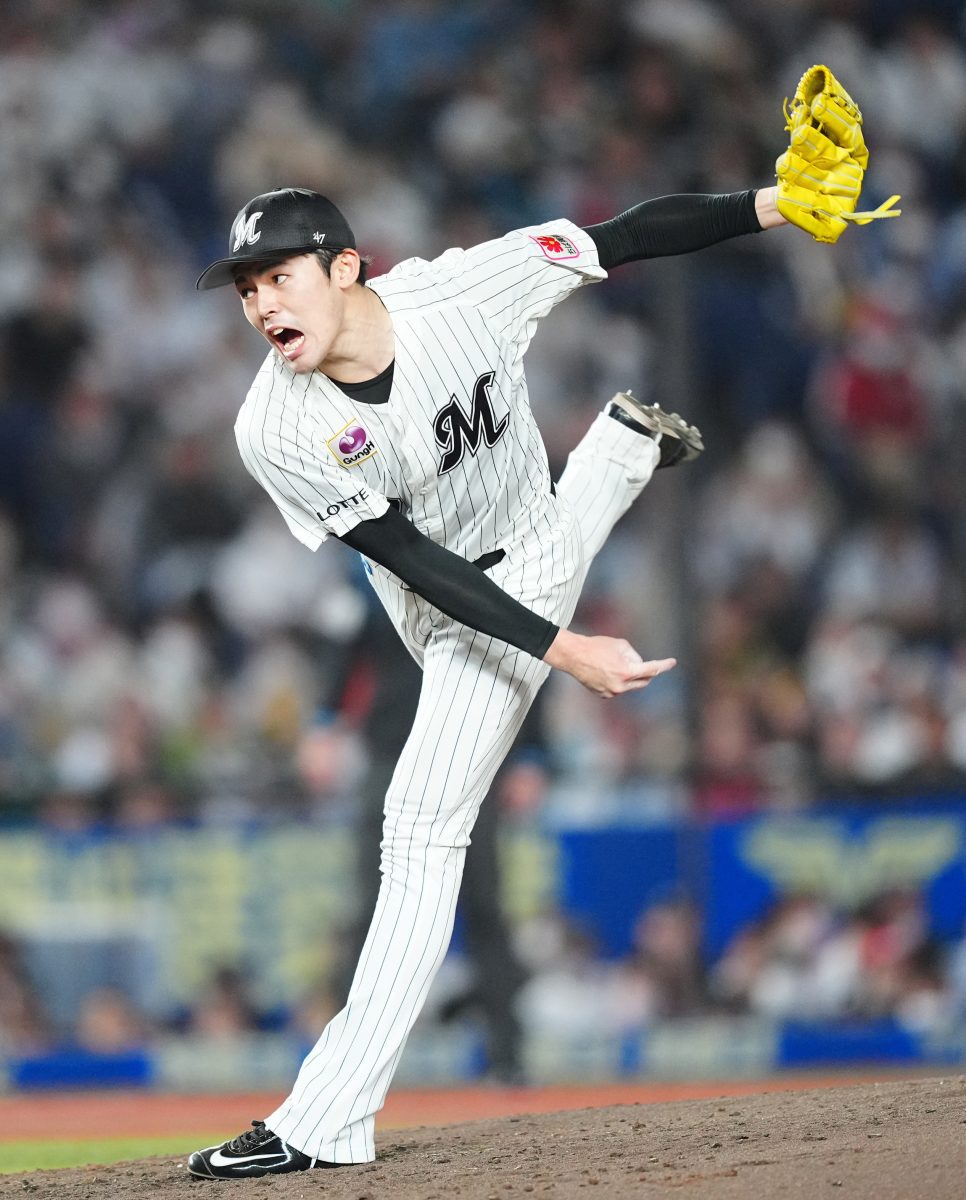



In the last few years, rumblings about a Japanese pitcher who consistently throws 100 mph and possesses one of the best splitters you’ve ever seen have made significant headlines. That pitcher’s name is Rōki Sasaki, widely considered the best starting pitcher in Nippon Professional Baseball for the last four seasons with the Chiba Lotte Marines.
Sasaki turned 23 on November 3 and has already accomplished so much in so little time. The righty is a two-time NPB All-Star and holds the league record for strikeouts in a game with 19. In that same game, Sasaki dominated the Orix Buffaloes for NPB’s first perfect game since 1994.
Naturally, Sasaki has expressed interest in playing at the highest level of professional baseball in the world, Major League Baseball. NPB players must have nine years of service or be at least 25 to qualify for the posting system, which makes them international free agents free to sign a contract as large as a team offers. Sasaki meets neither of those requirements.
Despite his disqualifications, the Chiba Lotte Marines announced their intentions to post Sasaki as requested on Saturday, November 9. Several baseball journalists, including The Athletic’s Ken Rosenthal, expect Sasaki not to sign with an MLB organization until the next international signing period, which begins on January 15, 2025. When the Marines post Sasaki, he will be an international amateur free agent and can only sign a minor league contract.
Any team interested in Sasaki may have to use most, if not all, of their international bonus pool money to sign the Japanese pitcher. Sadly, this means amateur prospects who already verbally agreed to a contract with Sasaki’s future team may have their contracts stripped.
Latin American teenagers hoping to make their baseball dreams come true make verbal agreements with MLB clubs even before they turn 16, the required age to sign a contract. Think about how different your life would’ve been as a 16-year-old with a couple hundred thousand dollars in the bank. Sounds nice, doesn’t it?
In almost all cases, the money spent on signing international amateur prospects from countries like the Dominican Republic, Venezuela, Nicaragua, etc., is life-changing. Dominican shortstop Leodalis De Vries, MLB.com‘s No. 1 ranked international prospect, signed with the San Diego Padres on Jan. 15, 2024, at age 17, for $4.2 million.
So, what will those amateur players do if their MLB club terminates their contract? One option is to find a contract with another team, potentially for less money. Another option is much more depressing but far too realistic: not signing a contract and missing out on a once-in-a-lifetime opportunity. The players who lose their contracts may abandon their baseball dreams and pursue another career.
So, what are the differences between Sasaki and these amateur Latin American prospects? First and foremost, Sasaki is MLB-ready. He will be in his team’s starting rotation on Opening Day 2025. Sasaki proved his talent against MLB-level hitters in the 2023 World Baseball Classic, striking out 11 in 7.2 innings for the eventual champion Samurai Japan. Sixteen and 17-year-old prospects are at a lower skill level than Sasaki and sometimes take five to eight years to develop before stepping on an MLB field. Some never do at all.
More than a handful of players from Latin American countries play only a few seasons in the Dominican Summer League, a rookie-based league founded in 1985. They fizzle out for numerous reasons, but sometimes, because they lack the development an MLB organization looks for in a player to move up their minor league system. Even for a player as talented as Leodalis De Vries, there’s no guarantee that he will make an impact for the Padres or another MLB club at the big league level.
What action can MLB take to prevent a situation like Sasaki’s from happening more in the future? In an article by The Atheltic’s Ken Rosenthal posted on November 19, he cites a potential for an international player draft, which the Major League Baseball Players Association formally rejected in July 2022. Rosenthal emphasizes the amateur players whose contracts are potentially terminated because of Sasaki’s pact with their MLB organization would be available for selection in an international draft.
Rosenthal listed multiple other resolutions in his story about Sasaki for The Athletic.
“If the league is not keen on making an exception for Sasaki, it could explore other options: adding to the other 29 teams’ bonus pools to allow them to sign players who lose their agreements with Sasaki’s club; finding a way to give those players some form of financial security while allowing them to become free agents; allowing a team to pay Sasaki in 2025 but count him against its pool in 2026; giving players to whom the team verbally committed for 2026 more time to find new deals.”
A player possessing Sasaki’s talent comes around only once in a blue moon. Still, the consequences of his early arrival in MLB will negatively affect the teenagers who already have verbal contract agreements with Sasaki’s future organization.
Change in the current system has reached an all-time high, and hopefully, there will be a course of action.